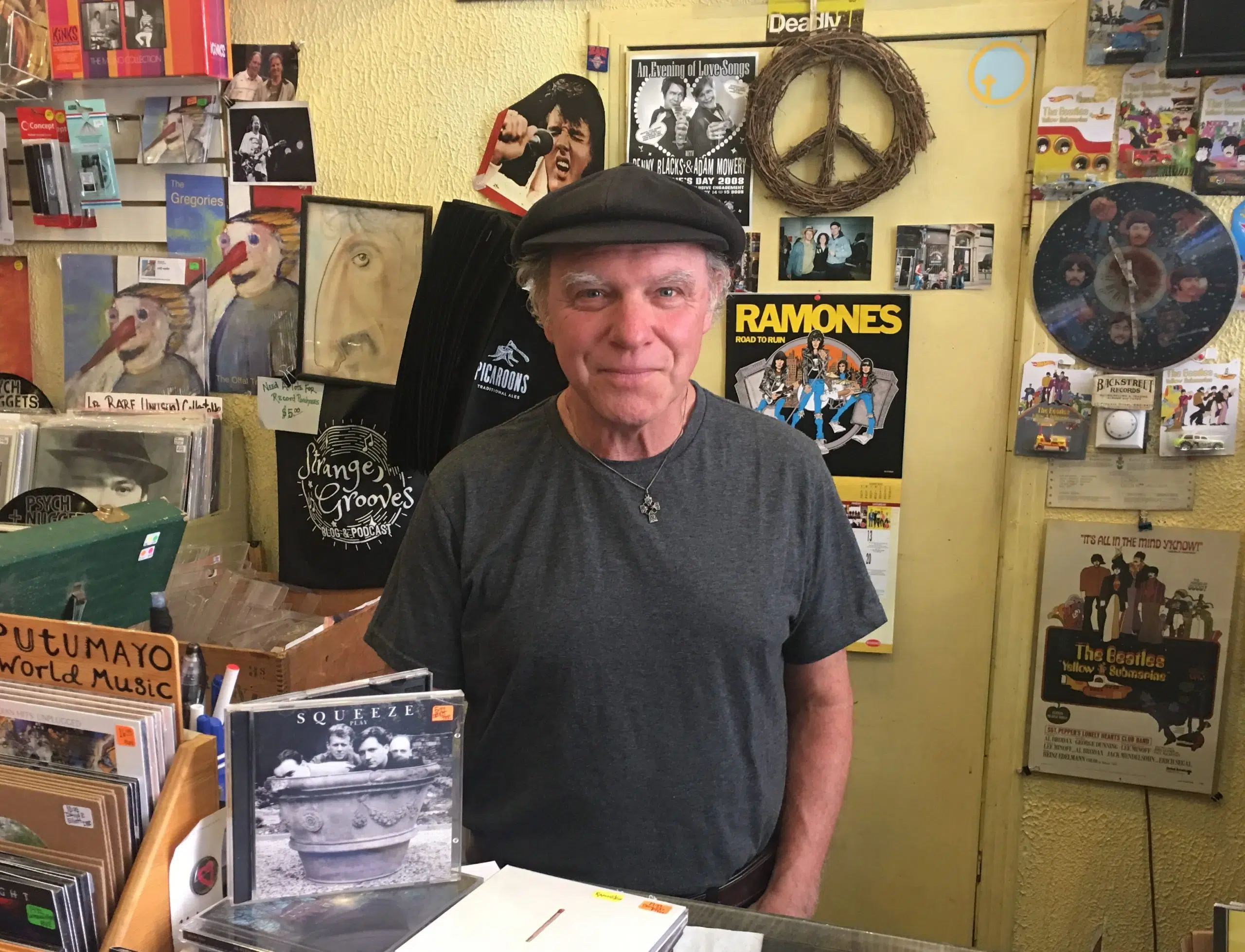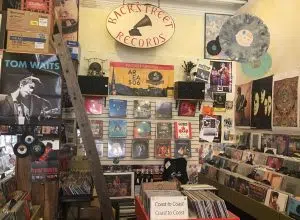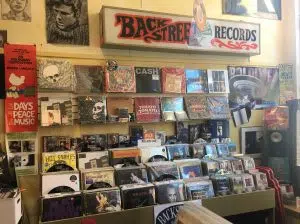
Gordie Tufts, founder of Backstreet Records
Vinyl records to some used to be large, cumbersome ancient fossils of music history coated in a thick layer of dust in your parents’, or grandparents’, basement but as the saying goes, everything old is new again. According to Nielsen Music research conducted in 2017, vinyl sales in the US rose for the twelfth consecutive year, by 9% with a record-high of 14.3 million albums. Vinyl sales rose by 22% in Canada and by 27% in the UK.
Gordie Tufts, founder of Saint John’s iconic Backstreet Records, observed that, “there was a downswing for sure in the Nineties for record sales.” But the shop still had a market even during the lows of record popularity. “When there was a downturn on vinyl sales, we were buying more collections and we were still selling because people who have always bought vinyl have always sought it out.”
Tufts elaborated, “the resurgence came back on vinyl about ten, eleven years ago with the introduction of Record Store Day in 2008.” Record Store Day, an annual event held in April, resulted from a brainstorming session of independent record store owners in Baltimore, Maryland in 2007 bringing together fans, artists and record stores across the world. Although the day began in the US, it is now an international event.

The colorful interior of Backstreet Records.
“From Day One here, the very first Record Store Day was a big hit. Joel Plaskett played out on the street, there were about two hundred and fifty to three hundred people outside the store. It is huge, there are always lineups to get in.”
Record Day has overtaken Boxing Day as Backstreet Records’ biggest day of the year. “Sales have been growing ever since; in fact, the last three or four years have topped all sales records for us in the history of the store. So, in all the thirty-nine years, that day just keeps getting better.”
It was perfect timing with the younger generation at an age where they would learn about and become interested in records joining the old-faithful record collectors and audiophiles, combined with records gaining a “cool” reputation. However, Tufts has a more measured approach to records’ increasing popularity.
“I am always sort of puzzled by the public’s perspective on vinyl, they think that its huge, but it’s only been about a 9% increase. But it is the only thing that is showing an increase; CD sales have slumped and downloading has slumped, iTunes has become non-existent. It’s a fading market; with the introduction of Spotify and things like that, that will always keep vinyl sales to a collector’s market.”
He hopes the popularity of records is not a flashy trend for the younger generation. “I think vinyl is something tangible that you can hold, that you can look at. You have a collection and its neat to walk into a living room and see records on a shelf.”
Business continues to be brisk, with “lots of competition with other rival stores, it’s always been that way. Competition is the best thing this market can have.”
“We still have mall stores and lots of independent stores, lots of competition with people like myself that are running stores like this. It’s a good community you know?”

Backstreet Records’ walls are STACKED with LPs.
Tufts also said vinyl records are “most definitely” holding its own against streaming but has concerns about the high prices of records. “We’ve seen some big increases overnight for catalogue and back catalogue items – The Beatles for instance, Neil Young, The Rolling Stones, some of the heavy weights. Some of the records that used to sell for $19.99 have all of a sudden jumped overnight to $35.98.”
He explained in further detail why some prices have skyrocketed. “I don’t believe it’s the artists, it’s the record companies. But not all companies have raised the prices, just some of the majors on strong catalogue items,” he elaborated. “I believe, well I’ve been told, that they call it ‘supply and demand.’ And I say, ‘how much of it is greed?’”
On what he believes would be fair pricing of records to be, “I would love to see records stay at about $22, $21.99. That to me is a happy price. When we put in the price of a record in 1980 and saw what it should be selling for now, I would say the average price of a record today is $27.99. The extreme is $35.98. But when you look at that calculator with $8.98 in 1980 compared to what it would sell for today it is about $27.99.”
“For somebody that has been in the industry as long as I have $35.98 seems extreme. $28 bucks, okay I can live with that, but I love $22.”
He has also noticed a very interesting trend regarding listening formats, “streaming is the main thing, but what we’ve seen is the drastic change from CD to vinyl.”
“We may have a record at $60 on the shelf. This artist has a ten-inch box set with three records in it and it sells for $59.98. And we have the CD on the shelf for $16.98. We’ve stopped bringing in the CD because it doesn’t sell; the $60 record sells.”

Records often sell faster than their CD counterparts at Backstreet Records.
Essentially, CDs are at the bottom of the music barrel. “If we bring in a major artist, we’re ordering ten copies of the vinyl and we’ll bring in three copies of the CD. The records will sell out in a week and we will still have three CDs on the shelf; now we’ve taken it down to one CD from three.”
When asked what the biggest sellers at the store were, Tufts said “the big sellers are local musicians. Backstreet Records has been known as a shop where if it’s a Saint John artist coming out with a release, we will carry it. For instance, classical music is not our marketplace, but the Saint John String Quartet have just put out a release and that has probably been our biggest seller these last couple of weeks.”
With Backstreet Records’ fortieth anniversary approaching next September, Tufts will need to start thinking of doing something special to top their 33rd anniversary.
“When we turned 33 that was probably our biggest celebration because a record turns at 33 1⁄3 . We took advantage of that and did a 33 1⁄3 anniversary. That was a big one for us. People were making jokes ‘what are you going to do when you hit 45, when you hit 78?’”






